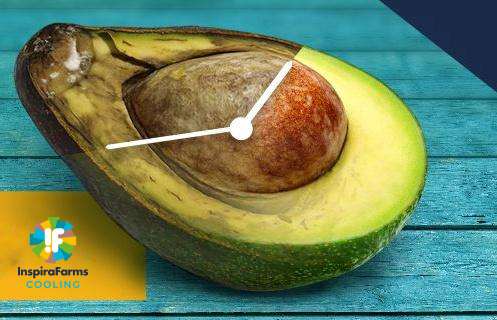The risks of inefficient cooling in fresh produce export
The global demand for fresh produce has never been higher, and with it comes the challenge of ensuring quality, safety, and longevity. As markets expand, consumer expectations rise, and the journeys from farm to fork become longer, maintaining the optimal freshness of fruits, vegetables, flowers, meats, and other perishables is critical. At the heart of this challenge is the underestimated element of efficient and consistent cooling.
Whether you’re a producer, distributor, retailer or consumer, understanding the dynamics of efficient cooling is essential in today’s fresh produce market. Cooling, or the lack thereof, influences every stage of the produce supply chain, from the point of harvest to household refrigerators. This article delves into the risk of inefficient cooling practices, including the potential repercussions across economic, health, environmental, and competitiveness in global export markets.
-
The economic impact on export revenues
The vibrancy, freshness and longevity of fresh produce are highly dependent on the quality of post-harvest cooling. The lack thereof curtails its shelf life, accelerating the degradation process and leading to premature spoilage. This not only escalates food loss but also diminishes the potential for profitable sales through produce shrinkage and weight decline from dehydration. And since fresh produce is weighed and sold by weight, such a decline results in lost revenue for the customer.
Equally, the visual freshness of fruits and vegetables is crucial, as it is a determining factor for their market value across the value chain. One of the observable impacts of lack of efficient cooling is signs of wilting or discolouration, with fruits and vegetables undergoing enzymatic browning or overripe without consistent cooling. Together, all these are signs that inevitably attract lower prices or worse, result in rejections.
Overall, this decline in visual appeal, arising from defective cooling, tightens the economic returns on both producers and retailers, as they grapple with shrinking profit margins.
-
Risks on food preservation and food safety
An efficient and consistent cold chain ensures that perishable fresh food products are cooled within a few hours of harvest and transported at the appropriate temperatures to prevent the growth of harmful microbial growth and maintain their freshness. Cold temperatures, especially in chilling or freezing conditions, significantly slow down the metabolic activities of microorganisms, including their ability to reproduce, produce enzymes, and break down food components. As a result, the spoilage process is delayed, and the risk of contamination is cut down.
This is even more important in meat products, which are particularly prone to pathogen growth that could lead to foodborne illnesses, such as Salmonella, E. coli, and Listeria. which can be harmful to consumers and damaging to the reputation of producers.
Read 5 more ways cold chain ensures food safety.
-
Climatic and environmental impact
Climate-responsible cold chain yields a net positive impact on the climate. Food systems are the second biggest contributor to greenhouse gases (GHG) after energy. With between 30-50% of food produced in Africa being lost, this represents a climate, economic and food challenge. Emissions from food losses from farm to retailer represent 3.7% of all GHGs2, this is astonishing when put into perspective that it is double the impact of aviation, or put another way, if food losses were a country, it would be the third biggest emitter in the world after the US and China.
To combat this, the cooling process should ideally commence as close to the production site as feasible to keep wastage minimal. Moreover, efficient cooling solutions, such as those designed by InspiraFarms Cooling are pioneering ways to decrease energy consumption by integrating innovative designs, engineering solutions, and technology.
-
Missed market opportunities and potential bans.
In the global market, efficiency and quality play crucial roles in determining success. Countries or producers that do not invest in efficient cooling solutions may find it hard to compete against those that ensure their produce remains fresh and of high quality throughout the supply chain, since the lack of proper cooling solutions means that many growers and exporters are often limited in their choice of markets. Longer shipping routes and sea freight, often necessary to reach more lucrative markets, require produce that has undergone efficient precooling to remain fresh for extended periods, hence a prerequisite to export.
Additionally, without the ability to ensure prolonged freshness, exporters may be restricted from selling to potentially less profitable markets, miss out on longer selling times that come with the capability to hold their produce and put countries at risk of market bans.
In conclusion
Given the multitude of risks associated with inefficient cooling, the decision to invest in state-of-the-art cooling systems like cold rooms, packhouses, and other solutions provided by InspiraFarms Cooling, becomes clear. Not only do these systems ensure the preservation of produce quality, but they also protect producers from economic losses and the potential risks of tarnishing their brand reputation. By understanding the essential role that efficient cooling plays in fresh produce export, stakeholders can make informed decisions to safeguard their products, profits, and reputation in the market.



